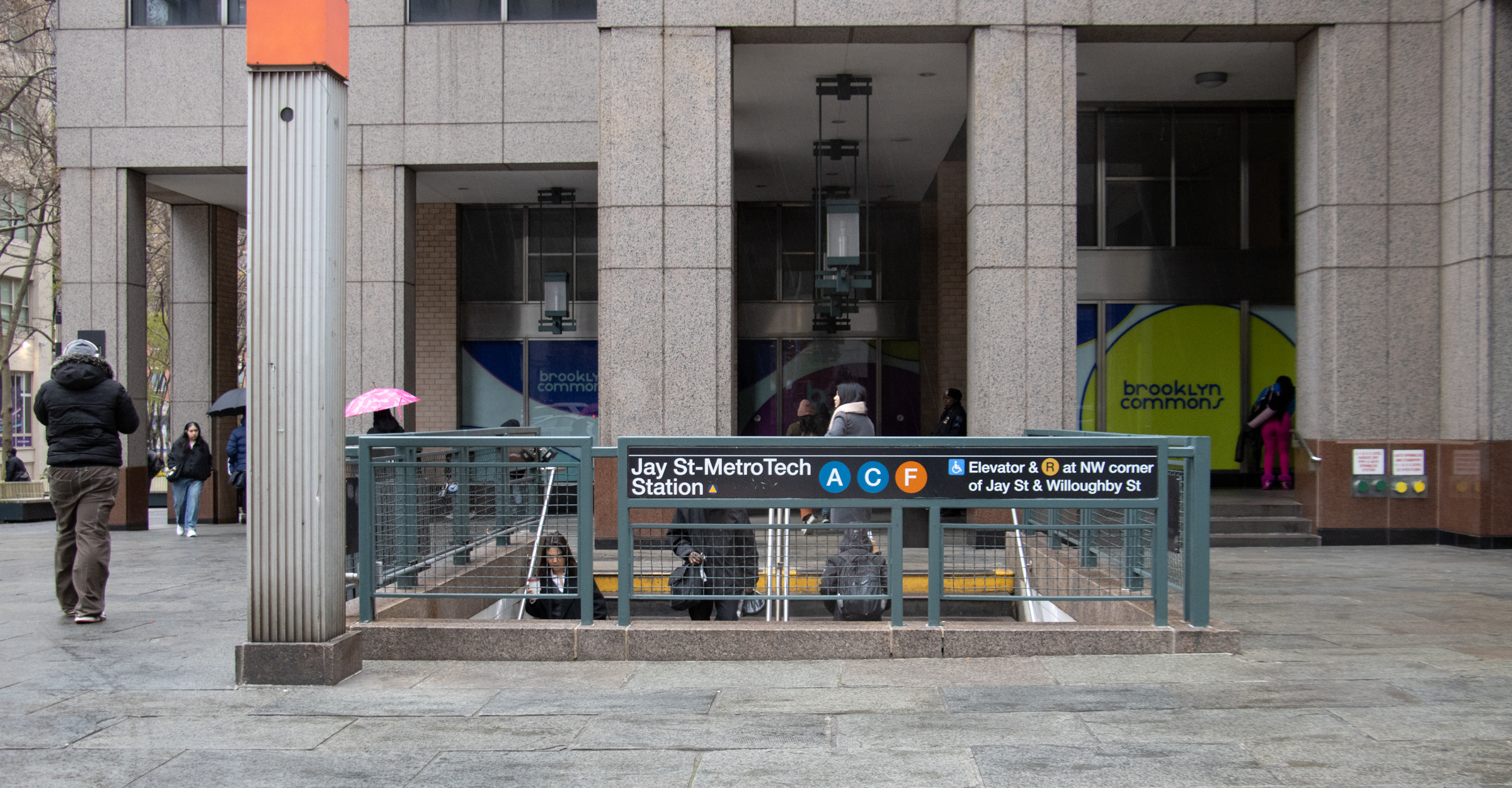Life During Recession Time: Schools
What will be the impact of the economic turmoil on Brooklyn schools? Will private schools like Packer, Berkeley Carroll, Friends, Saint Ann’s and Poly Prep see high rates of attrition? (We heard that close to 50 families have given notice to Trinity in Manhattan that their kids won’t be back next year.) It’s no secret…

 What will be the impact of the economic turmoil on Brooklyn schools? Will private schools like Packer, Berkeley Carroll, Friends, Saint Ann’s and Poly Prep see high rates of attrition? (We heard that close to 50 families have given notice to Trinity in Manhattan that their kids won’t be back next year.) It’s no secret that many of the thirty-something parents sending their single-digit-aged children to these schools get assistance from their sixty- and seventy-something parents; the thirty-somethings may be losing their jobs (or just making less money) while the grandparents all of a sudden are facing the prospects of their retirement on half the savings they thought they had. In this scenario, will private schools be forced to cut tuitions or will only the truly rich be able to attend? And if many private schoolers shift to a public school system that’s simultaneously undergoing large cuts, what does that mean for class sizes and education quality? On the other hand, could the injection of some private school refugees be good news for some public schools? What do you think?
What will be the impact of the economic turmoil on Brooklyn schools? Will private schools like Packer, Berkeley Carroll, Friends, Saint Ann’s and Poly Prep see high rates of attrition? (We heard that close to 50 families have given notice to Trinity in Manhattan that their kids won’t be back next year.) It’s no secret that many of the thirty-something parents sending their single-digit-aged children to these schools get assistance from their sixty- and seventy-something parents; the thirty-somethings may be losing their jobs (or just making less money) while the grandparents all of a sudden are facing the prospects of their retirement on half the savings they thought they had. In this scenario, will private schools be forced to cut tuitions or will only the truly rich be able to attend? And if many private schoolers shift to a public school system that’s simultaneously undergoing large cuts, what does that mean for class sizes and education quality? On the other hand, could the injection of some private school refugees be good news for some public schools? What do you think?





I just realized that I’m coming across as really gruff. Sorry.
It just makes me a little crazy that up until 6 months ago, everyone loved NYC, everyone loved Brooklyn, and this was the center of the universe. I’m exaggerating, obviously.
Now things get a little rocky and everyone talks about leaving the city? It just shows how many people are here based on greed, and really were most interested in seeing their property values climb.
I don’t even have kids and I support the public schools.
Why am I the only person on this thread who seems to be speaking positively about Brooklyn?
11217;
I agree with you that urban living has been increasing in popularity, and is in line with the “green” movement. Looking ahead, the city is heading into stormy days due to the meltdown of the financial sector, and it will be interesting to observe if this movement continues to grow, or is washed away by other cross-currents. If I knew the answer to how it will go, I’d be making some bets right now!!
The data is from the U.S. Census. Is it not good enough because it doesn’t support your point?
The point is that NYC continues to grow.
Whether it’s families with children (thus having to do with the topic at hand) seems to be the point in question, however.
In any event, the city is expanding. There were 10 years where lots of white people left the city (1970’s) and if they decide to do it again, so be it. The city is still expanding in the long run.
11217 – sorry but I really do not think that population data from 100yrs ago and prior is at all relevant (the suburbs werent even truly developed back then) – unfortunately the period 1970-1980 are probably the nearest comparison – btw where do these stats come from anyway?
Benson,
I’m not writing them off, I simply don’t think they will leave in great numbers, that’s all. I think the world has changed a lot since the 60’s 70’s and 80’s. Gas prices might be low now, but that isn’t going to last. I really truly believe we are moving more towards a more urban way of living and I think that will only snowball into the coming decades.
Sure, some will leave, but they really weren’t cut out for city life (or at least NYC life) and we can’t force them to stay.
I’m not saying that everyone needs to like the city, but I do see urban life becoming more and more popular as time goes on.
There were two decades which saw population declines. Mostly due to white flight…
Take a look at the decades during the Great Depression. HUGE increases in population…
1698 4,937 —
1712 5,840 18.3%
1723 7,248 24.1%
1737 10,664 47.1%
1746 11,717 9.9%
1756 13,046 11.3%
1771 21,863 67.6%
1790 33,131 51.5%
1800 60,515 82.7%
1810 96,373 59.3%
1820 123,706 28.4%
1830 202,589 63.8%
1840 312,710 54.4%
1850 515,547 64.9%
1860 813,669 57.8%
1870 942,292 15.8%
1880 1,206,299 28.0%
1890 1,515,301 25.6%
1900 3,437,202 126.8%
1910 4,766,883 38.7%
1920 5,620,048 17.9%
1930 6,930,446 23.3%
1940 7,454,995 7.6%
1950 7,891,957 5.9%
1960 7,781,984 −1.4%
1970 7,894,862 1.5%
1980 7,071,639 −10.4%
1990 7,322,564 3.5%
2000 8,008,288 9.4%
2007* 8,274,527 3.3%
11217;
I wouldn’t be so cavalier about the prospect of the upper middle class leaving the city. The attitude you display mirrors in many ways that of the City Fathers during the 60’s (the Lindsey administration in particular).
The upper middle class, as well as the middle class, did leave during that time, and the results were devastating. The city had no money for executing even the most basic services. The filth and decay were overwhelming _ I lived through that period.
I’m not predicting that this is going to happen again – I certainly hope not. All I’m saying is that it is not wise to write-off a key portion of the population simply because you don’t like their lifestyle. When all is said and done, this is the group that pays the lion’s share of the taxes. Most are willing to do so, as long as the level is not excessive and they feel like they are getting something for their money – which is the point Miss Muffet was trying to make.
11217, on the tax point, it’s true that property taxes are much higher outside the city, but income taxes are a lot less. also, for a family with kids, $20k in property tax is still less than most private-school tuitions; with two or more kids, the savings are even greater (e.g. 3 kids = $7k/kid in ‘school tax’). so there are legitimate economic reasons to move to the burbs, especially when kids and schools are a factor. i wouldn’t want to do it myself, but your caricatures about the people who do want to do it are off the mark.
11217 – you better review your population stats again – we went through a very long period of declining population here in NYC – the increase only was in the last decade or so – and frankly since this coincided with an economic boom – not sure how relevant that is.